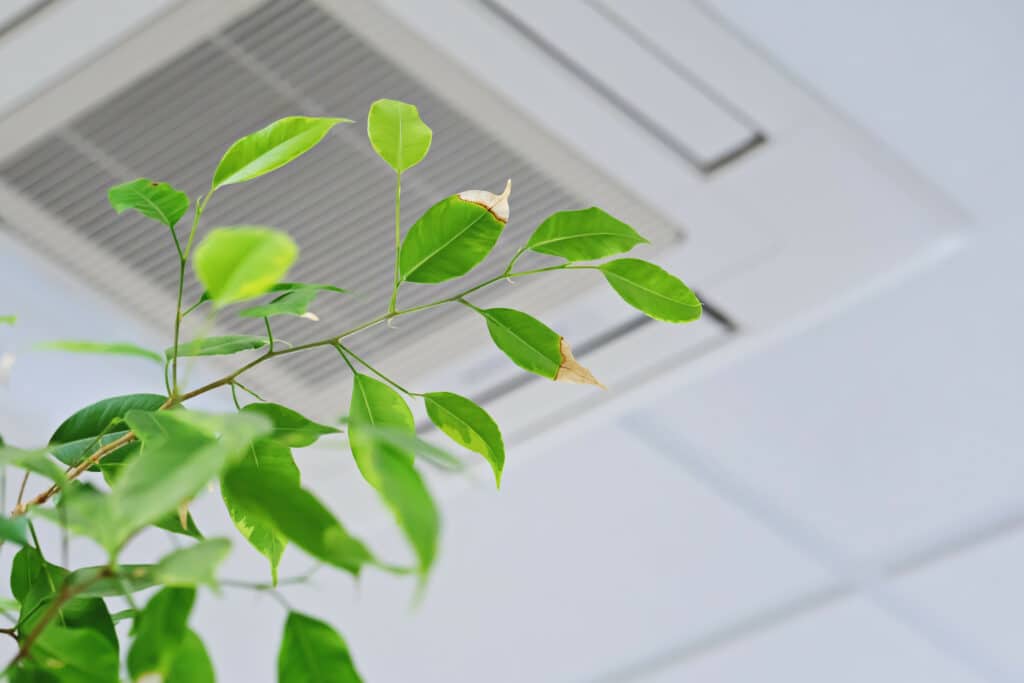
24/7 Emergency Phone Line
Family Owned & Operated
Licensed, Bonded & Insured
Hayfever — or an allergic reaction to pollen — happens when a person becomes exposed to fine, pollen particles or powder produced by flowering trees, flowers, and other plants. During springtime, pollen outdoors can leave you running for reprieve indoors. Oftentimes, pollen from outside can creep its way inside your home, resulting in exacerbated allergy symptoms no matter where you go. Fortunately, however, there are a number of things that those with a mild-to-moderate pollen allergy can do to minimize the effects of a high pollen count indoors. Bloomington Heating & Air offers the following tips for ensuring your home is pollen-free throughout the spring season.
Contact us today for additional resources or to schedule residential HVAC services!
Schedule HVAC Maintenance
Among the most effective ways to keep pollen from circulating throughout your home is scheduling professional HVAC maintenance. Investing in routine system tune-ups can help safeguard your home’s indoor air quality (IAQ) and prevent airborne particulates — including pollen, dust, mold, mildew, and additional varieties of contaminants — from penetrating and circulating within your residence. In addition to our heating and AC services, our team provides home indoor air quality solutions designed to help improve the comfort and health of our customers and their loved ones. Contact us today to schedule IAQ and maintenance services!

Change Your Air Filter
Another great way to reduce the likelihood of pollen allergies in your home is to change your air filter. But not all air filters are created equal — the consequences of using the wrong air filter could cause your heating and cooling system to work overtime and sustain unnecessary wear and tear or even fail to function entirely. We recommend installing a HEPA filter (high-efficiency particulate air filter), which traps more than 99 percent of microscopic particles, as well as filters with high MERV ratings. Bloomington Heating & Air offers multiple indoor air solutions, including air purifiers for allergies to help those suffering from pollen allergies breathe easier.
Dry Your Clothes Indoors
The weather outside may be bright and breezy, but springtime’s pollen counts can leave you sneezing. Unfortunately for those who suffer from allergy symptoms, Bloomington’s pollen concentrations are at their highest during some of the most pleasant parts of the year — the spring and summer. In addition, many homeowners often choose to dry their freshly-laundered clothes outdoors during the spring. Not using your in-unit dryer in favor of the fresh, outdoor breeze may be a tempting, cost-saving option, but doing so could promote and exacerbate allergy symptoms. Skip the outdoor drying rack and, instead, opt for drying clothes indoors, whether on an indoor drying rack or in the dryer unit.
Shut Windows & Doors
One of the top, natural remedies for allergies and sinus issues involves sealing your indoor spaces from exposure to outdoor allergens. To ensure pollen stays outside, promptly close and firmly shut any and all exterior windows and doors. This is particularly effective when pollen counts peak during the early morning and evening. Be sure to stay up-to-date with Bloomington’s pollen forecast for the latest information about the local pollen count — doing so can give you a better idea of when it’s safe to keep your windows open and enjoy the fresh outdoor air without having to suffer through allergy symptoms as a result.
Shed A Layer At Home
Those seeking relief from outdoor allergies by heading indoors should first consider how their jackets, shoes, and other clothing items and accessories might affect their indoor pollen counts. To avoid bringing inside all of the accumulated pollen on shoes and garments, homeowners should designate a specific area located near the front door for removing outerwear and shoes before proceeding into the rest of the home. Even if you just set up a coat rack or shoe rack along with a doormat by the front door, this simple pollen allergy home remedy can make a world of difference to keep pollen out of your indoor spaces.
Clean Your Home Often
Sticking to a thorough, recurring home-cleaning schedule can help minimize the presence of pollen in your home. While keeping your home pollen-free might seem like a never-ending task, cleaning is one of the best ways to ensure your pollen allergy symptoms are kept in check. When cleaning, use a wet rag or duster instead of a dry one to avoid kicking up dust, pollen, and other indoor allergens into the air. In addition, be sure to vacuum and/or mop regularly to remediate carpet allergies and ensure any pollen settled into carpet fibers or flooring cracks are promptly and effectively removed.
